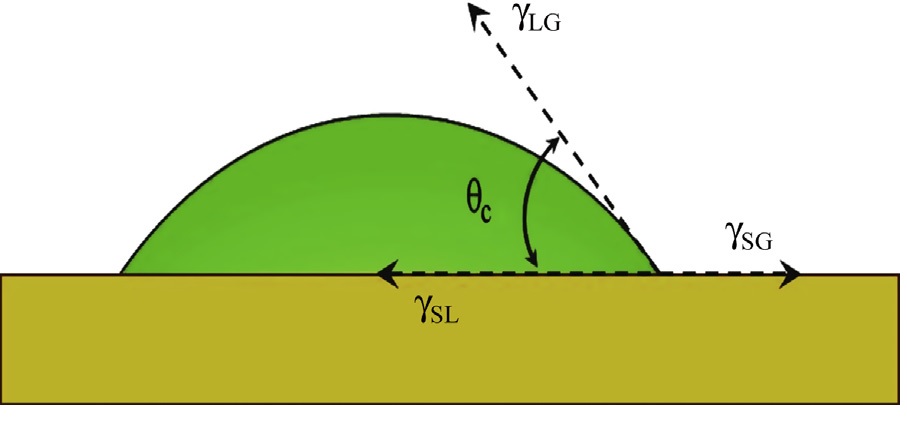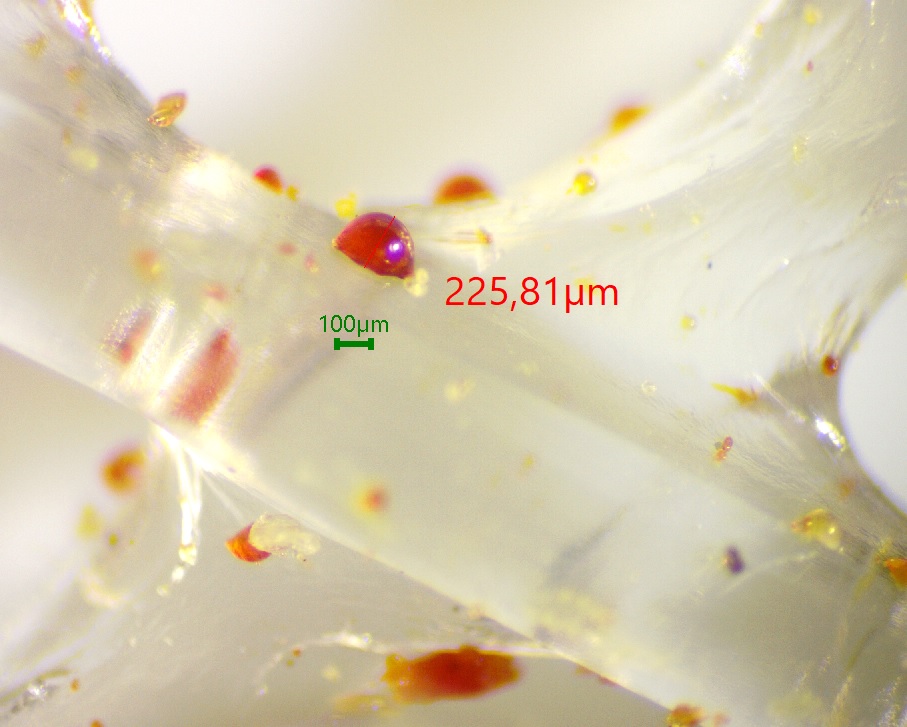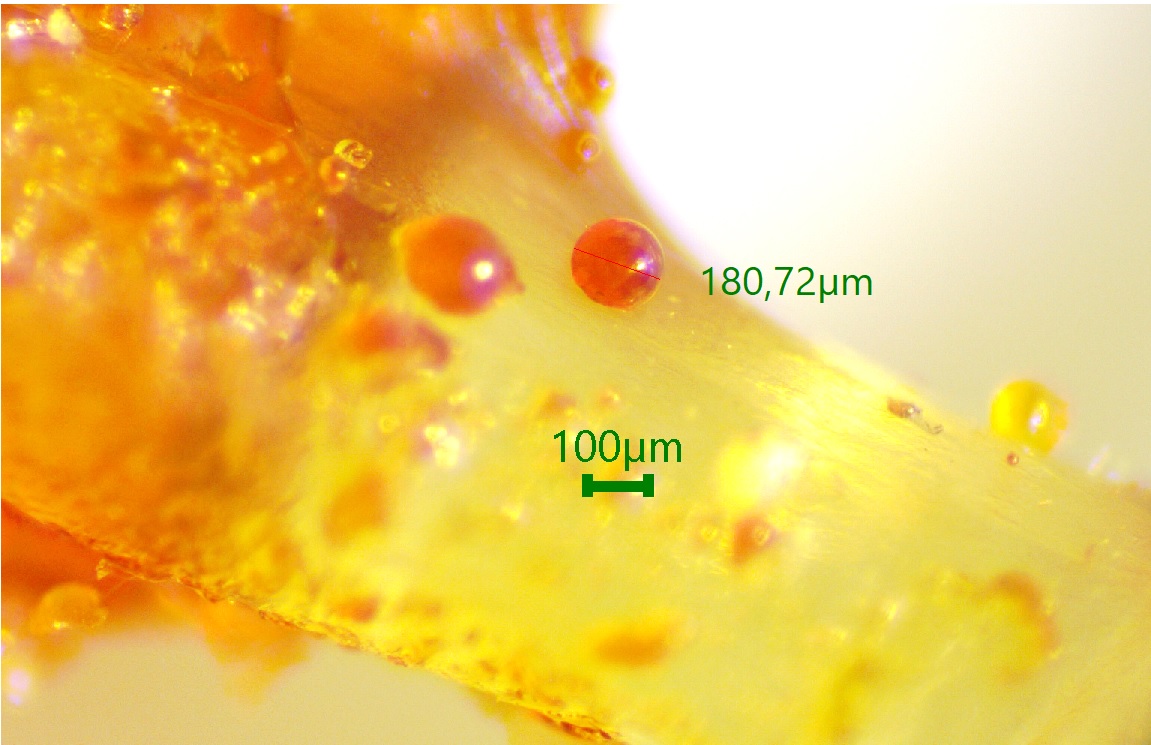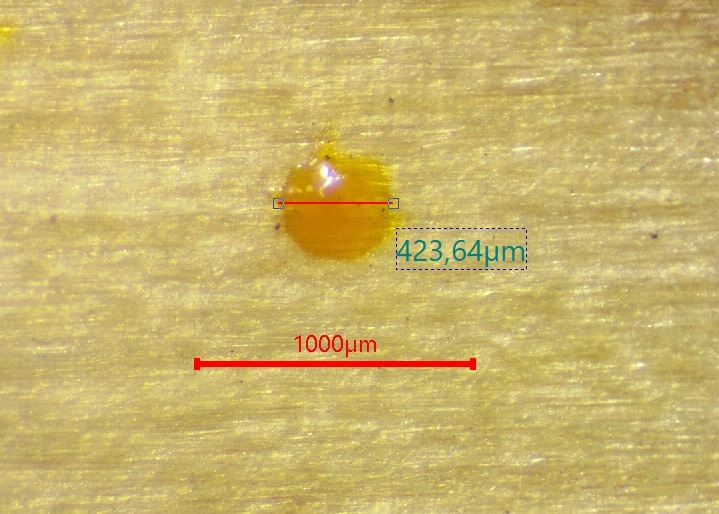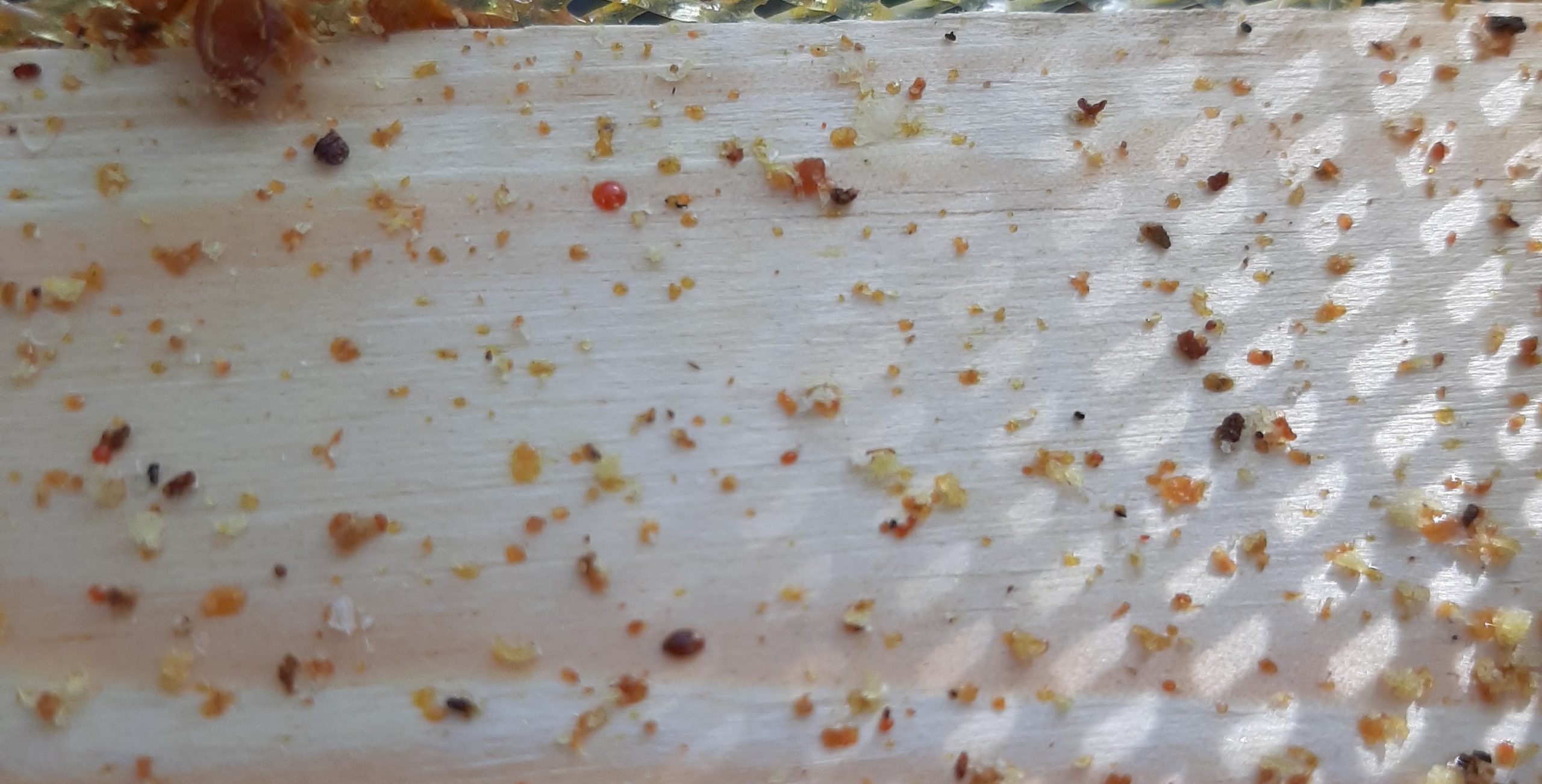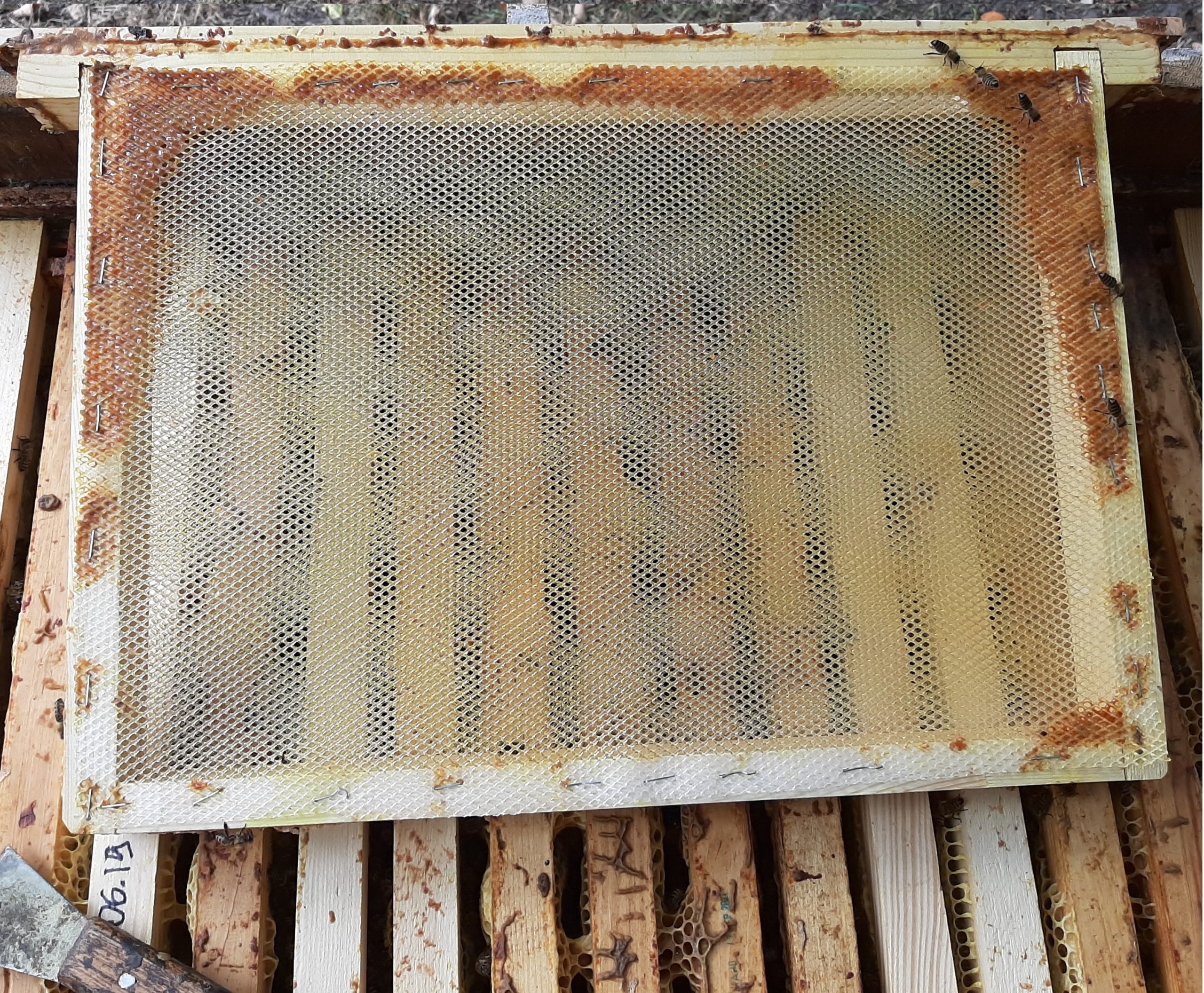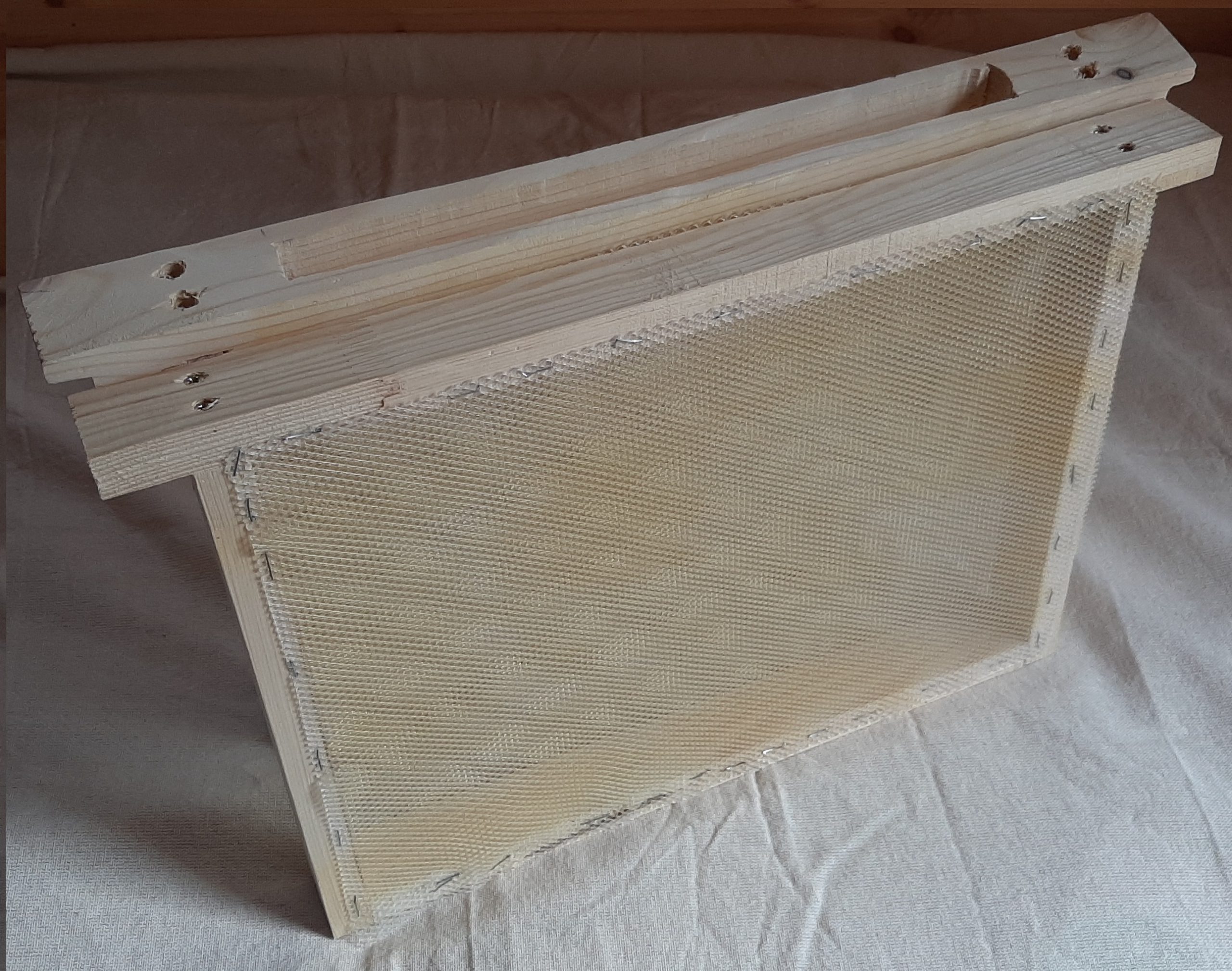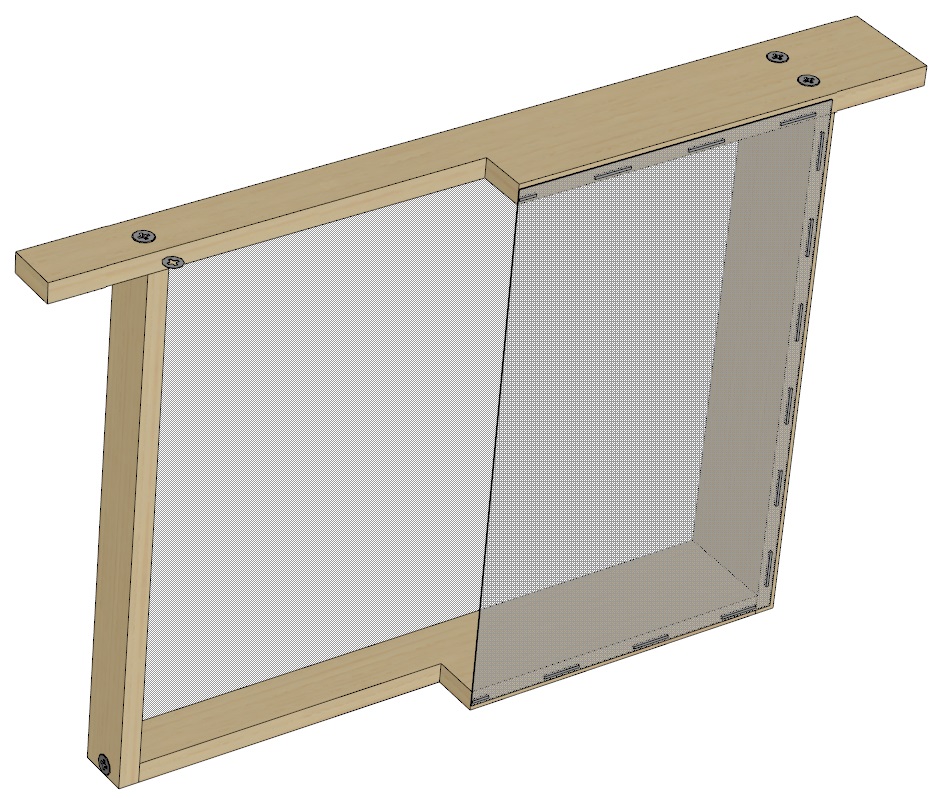By; Dvykaliuk Roman
Propolis is a sticky resinous substance collected from buds, leaves and stems of wild plants and processed by bees. It has bactericidal properties which they use for sealing cracks in the hive, polishing walls of wax cells and embalming corpses of enemies (mice, reptiles, etc.) (DSTU 4662:2006, 2006). Propolis is divided into types depending on the botanical source from which the plant resin originates. Today, the following main types of propolis are known: Brazilian Red Propolis, Brazilian Green Propolis, Aspen Type Propolis, Mediterranean Propolis, Poplar Type Propolis, Pacific Propolis Type and Mangifera Propolis Type (Popova et al., 2022). Many plants in the world generate sticky substances. Langenheim (2003) points out that it is a mistake to generalize all plant secretions (juice, escudates) as resin. The secretions previously confused with resin can be distinguished from pure resin by their chemical composition and biosynthetic pathways by which they are produced. Honey bees select resins that are moderately sticky so that they can manipulate them and soft enough to cut them off a plant surface with mandibles (Salatino and Salatino, 2017). At the same time, Isidorov et al. (2016) assumes that the selective behavior of bees during the search and accumulation of resin is due to its antimicrobial properties, since the main function of propolis in the bee family is protection against pathogens. Presumably, other resins contain substances that, on the contrary, repel bees. Plants generate secretions, including resins, as protection against pests and herbivores. Accordingly, the assumption that some substances repel, in particular, honey bees can be quite reasonable. When collecting plant resin, bees use their mandibles to cut it and their rear legs to carry this resin to the nest. Kekeçoğlu et al. (2019) studied the interdependence of morphological features of bee races (Apis mellifera caucasica, Apis mellifera carnica and Apis mellifera syriaca) and productivity of propolis harvesting by bee families. A wing size, a proboscis length, a leg size and a mandible size were taken into account in the study. The results show that the size of the bee body parts involved in harvesting, transportation and making propolis, affect the propolis productivity. These results confirm the need for beekeepers to renew honeycombs in the bee nest and make a variety of food available for breeding full-fledged bees and, accordingly, the proper population.
Saccardi et al. (2021) conducted a thorough study of the adhesive properties of propolis. The material for the study was propolis obtained from a nest of honey bees. Propolis was studied under different conditions, such as changes in temperature, compression force and on different substrates (glass, steel, plastic, etc.). Researchers note: propolis sticks to a wide range of substrates, even when the substrate is placed under water or in oil. Storing propolis for seven hours at room temperature (24°C) showed that the samples lost ∼0.9% of their weight during this period. Therefore, the question is how honey bees cope with such an adhesive substance (mixture of substances) as propolis. Saccardi et al. (2022) investigated the interaction between propolis and honey bee mandibles and studied in detail the surface structure of the inner part of the honey bee mandible. This surface is in contact with propolis, so authors focused on possible effects of structure to the surface adhesion of propolis. Microphotographs of the bee mandible surface showed that they are covered with anisotropic micro-patterns similar to scales. During the study, they tested the adhesion of propolis to selected mandibles, some of which were washed with various chemicals. The researchers found that bee mandibles are covered with mandibular gland enzyme. The low contact angle (<30°) of the enzyme suggests that the mandibular surface may be oleophilic. The propolis adhesion reduced by four times in the presence of a layer of natural enzyme on the upper part of the mandibular epicuticle, while the scale-like micro-pattern on the mandible may promote the spread of fluid.
In 2019, we developed collectors to explore new ways of collecting propolis from honey bees in conditions of the temperate microclimate of Ukraine. Collectors are shaped like a hive frame measuring 435×300 mm. Three types of collectors were used in the experiment, as shown in Figure 1. The first type was made of a solid frame, the second type had a cut hole in the upper bar (Figure 1A), and the third type had a wick for wetting with essential oil and stimulating bees with foreign odors to lay propolis. An elastic mesh of Stanz Pres ethyl vinyl acetate is attached to both sides of the collector with metal brackets.
The study was conducted at an apiary located in the Kyiv region of Ukraine. According to its results, it should be noted that this method of collecting propolis has low-productivity in terms of output. At the same time, according to organoleptic indicators, propolis was clean and did not contain wax. Collectors in the nest of honey bees were organized to prevent bees from getting inside the collector at any time. During a detailed inspection of collectors, formation of sitting drops was found inside on the lower bar of the collector (Figure 2). By consistency and color, they corresponded to propolis contained in the nets.
We performed a microscopic analysis of the formations diameter in each collector type and proved for the first time that honey bees, manipulating propolis in the nest and devices for its collection, can lose propolis due to its liquefaction to a liquid state (Dvykaliuk et al., 2022). Until now, it was known that bees lose wax crumbs when rebuilding honeycombs. Since propolis is liquefied to a liquid state, there is a need to investigate how the liquid phase of propolis interacts with various artificial materials. Nets inspection results suggest that bees first cover the perimeter of a mesh opening with propolis, and only then – the center. Wettability of the artificial material with liquid propolis at the place of its deposition by a bee would contribute to self-covering due to spreading around the perimeter of a mesh opening. This, in turn, can contribute to an increase in the propolis intake by reducing the time taken by bees to cover a mesh opening perimeter. Today, the manufacture of nets and meshes for propolis collection is mainly focused on the opening size, durability of the material, its acceptability for contact with food and suitability for cleaning from propolis deposited by bees. We are not aware of any studies aimed at finding materials that are wetted with liquid propolis, as well as finding optimal reliefs that would facilitate such wetting.
In 2022, as part of our research on propolis in Ukraine, we installed 70 propolis collection screens at 10 apiaries managed by members of the Foundation of Women Beekeepers. It was discovered that propolis drops were also present on the screens (Figure 3), which further confirms our earlier findings using collectors (Figure 1.)
Surface wettability is important in many fields of science and technology – from the mining industry to the creation of modern functional materials and biomedical products (Beketov and Shynkarenko, 2022).
Measuring the contact angle allows understanding how a surface interacts with a three-phase system (solid/liquid/air). One of the most common methods of analyzing the contact angle is through direct measurement of the tangent angle at the point of distribution of the three-phase equilibrium using the sessile drop method. For flat surfaces, the wetting property was determined by directly measuring the contact angle through drop profile observation (Figure 4). A contact angle value of 0>90 degrees indicates surface non-wettability, which is referred to as hydrophobic. When the contact angle value is 0<90 degrees, the surface is referred to as hydrophilic (Hebbar et al., 2017).
Summing up, it is worth noting that this is the first study in this direction. It is not known whether honey bees liquify other types of propolis to such a liquid state, especially when it comes to propolis from tropical countries, namely Brazilian Red Propolis and Brazilian Green Propolis. In the future, it is necessary to study artificial materials for their wettability with propolis liquefied by honey bees. Given study results of the bee ethology during the accumulation of propolis in collectors, it is possible to revise approaches to production of meshes and grids for its collection. In addition, we have gained new knowledge on bee behavior and propolis management in a moderate climate zone. Today, the production of materials from various raw materials creates a significant range of products on the market. Additionally, these materials are processed to alter the structure properties using surface coatings, spraying, polishing or changing the roughness and using lasers. All these achievements should also be considered in beekeeping in order to increase the amount of valuable raw materials such as propolis.
Dvykaliuk Roman, Chairman of the Board of BeesAgro Controlled Pollination Association; PhD candidate of the National University of Life and Environmental Sciences of Ukraine; Kyiv, Ukraine. E-mail: Roman.Dvykaliuk@delta-sport.kiev.ua
References
- DSTU 4662:2006 (2007). Propolis. Tekhnichni umovy [Propolis. Technical specifications]. DSTU 4662:2006 from 1st July 2007. Kyiv: Derzhspozhyvstandart Ukrainy [in Ukrainian].
- Popova, M., Trusheva, B., & Bankova, V. (2022). Chemistry and Applications of Propolis. In Murthy, H. N. (eds.), Gums, Resins and Latexes of Plant Origin. Reference Series in Phytochemistry. Springer, Cham. https://doi.org/10.1007/978-3-030-91378-6_38.
- Langenheim, Jean H. (2003). Plant resins: chemistry, evolution, ecology, and ethnobotany / Jean H. Langenheim. p. cm. Includes bibliographical references (p. 586). ISBN 0-88192-574-8.
- Salatino, A., & Salatino, M. L. F. (2017). Why do honeybees exploit so few plant species as propolis sources? MOJ Food Processing & Technology, 4(5), 158–160. https://doi.org/10.15406/mojfpt.2017.04.00107.
- Isidorov, V. A., Bakier, S., Piroznikow, E., Zambrzycka, M., & Swiecicka, I. (2016). Selective behaviour of honey bees in acquiring European propolis plant precursors. Journal of Chemical Ecology, 42(6), 475–485. https://doi.org/10.1007/s10886-016-0708-9.
- Kekeçog˘lu, M., Erog˘lu, N., Kambur, M., & Münir, U. Ç. A. K. (2020). The relationships between propolis collecting capability and morphometric features of some honey bee races and ecotypes in anatolia. Journal of Agricultural Sciences, 26(1), 71–77. https://doi.org/10.15832/ankutbd.447319.
- Saccardi, L., Schiebl, J., Weber, K., Schwarz, O., Gorb, S., & Kovalev, A. (2021). Adhesive behavior of propolis on different substrates. Frontiers in Mechanical Engineering, 7, 660517. https://doi.org/10.3389/fmech.2021.660517.
- Saccardi, L., Brümmer, F., Schiebl, J., Schwarz, O., Kovalev, A., & Gorb, S. (2022). Interaction between honey bee mandibles and propolis. Beilstein Journal of Nanotechnology, 13, 958–974. https://doi.org/10.3762/bjnano.13.84.
- Dvykaliuk, R., Adamchuk, L., & Pylypko, K. (2022) Propolis Drops as Evidence for Dilution of Propolis by Honey Bees?, Bee World, 99:4, 110–116, https://doi.org/10.1080/0005772X.2022.2094139.
- Beketov, G., Shynkarenko, O. (2022). Surface wetting and contactangle: basics and characterisation. Himia, Fizika ta Tehnologia Poverhni. 13(1). 3–35. https://doi.org/10.15407/hftp13.01.003.
- Hebbar, R. S., Isloor, A. M., & Ismail, A. F. (2017). Contact angle measurements. In Membrane characterization. Elsevier. 219–255. https://doi.org/10.1016/B978-0-444-63776-5.00012-7.







